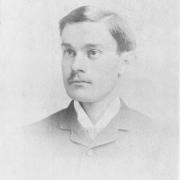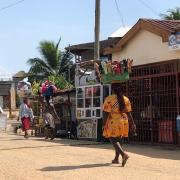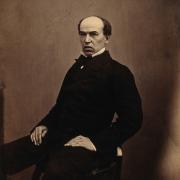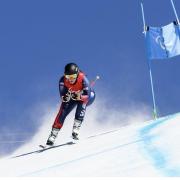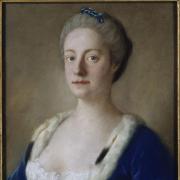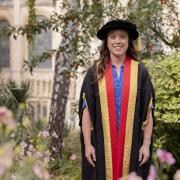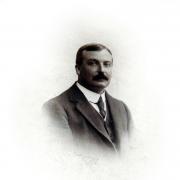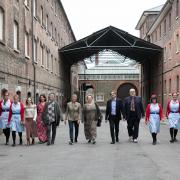We've all seen the signs for twin towns but what are the benefits of these partnerships with our European cousins? Kent Life investigates...
How many of us have driven into one of the county’s towns and below the ‘Welcome to wherever’ sign seen something either unpronounceable (usually German) or faintly romantic sounding (usually French)? Town twinning is a common enough phenomenon in Kent and yet beyond its presence on a few road signs it’s not always clear what these relationships mean to the towns involved.Edenbridge“I think there are two main benefits from these kinds of partnerships,” says Peter Stevens, chair of the Edenbridge and District Twinning Association (EDTA). He adds: “One of the most obvious is the promotion of cross-cultural understanding. We go to events in Mont-Saint-Aignan and representatives from their twinning association come here. “This is a great way to learn about each other’s cultures. And because you’re showing your town off to people from another country, taking part in town twinning also gives you a sense of civic pride as you become even more aware about what is so great about where you live.”The idea of creating greater cultural awareness lies at the heart of the twin town movement. Many of the partnerships date from the decades after the Second World War, when the issue of cross-cultural understanding was seen as integral to the promotion of European harmony. In recent years, the important role played by town-twinning has also been recognised by the EU via the establishment of a fund to both support existing relationships and promote the creation of more in the future.CanterburySo we know what these partnerships are meant to do, but how do they go about doing it? “There are so many different things that we do in our links with Reims” says John Hunt of the Canterbury Twinning Association. “We have annual organised events between dignitaries of the towns, such as the Joan of Arc Festival in Reims which is attended by the Lord Mayor of Canterbury and the ceo of the town. “It’s been the tradition for the respective mayors of Canterbury and Reims to lay a wreath at the statue of Joan of Arc (hopefully erasing the folk memory that the English burnt her). “We also have numerous link-ups between different groups. For example, St Peter’s Methodist, a local Canterbury primary school, is twinned with a similar school in Reims. Some of these groups might hold annual events or they might link up with their partnerships on an ad-hoc basis.”One such group who have managed to build a strong partnership are the Canterbury Harriers. According to their chairman Marco Keir, from very small beginnings their relationship with their counterparts in Reims has blossomed.“Initially a few of us were invited over to Reims to participate in their annual running event during October. This is quite a big deal and the event often brings the entire town to a standstill. “The numbers going over there have grown each year and through this our members have made some great friends and taken part in other runs elsewhere in that part of France. “A few years ago, we were able to return the favour and invite them back to an event we run near Faversham during July. The first time they came we organised some great extra events for them, such as a tour of Canterbury cathedral roof and a cream tea within the cathedral grounds. “It was such a success that the year after they brought over a coachload of visitors, including some elite runners. We’ve developed such a relationship with the runners in Reims that several of our members now join up with their Reims counterparts to explore other running routes across Europe.”WhitstableSeen internationally as possessing one of the most successful town-twinning organisations, Whitstable currently has five partnerships: Albertslund (Denmark), Borken (Germany) Dainville (France) M�lndal (Sweden) and Ricany (Czech Republic). And if that’s not enough it’s also got friendship links with Grabow (Germany), Sisimiut (Greenland), Bolk�w, (Poland) and L’Viv (Ukraine).“Since it was formed in 1983, the Whitstable Twinning Association (WTA) has been very active in forming partnerships with people from across Europe,” says Roger Annable, chairman of the WTA. Roger believes much of this success is attributable to the way in which the WTA has approached things.“From the start, we have had strong leadership, enthusiasm and a clear vision. There has always been a dedicated team of co-coordinators and a committee working hard to make the relationships work,” he says. “This has been so well received that now almost all partner-towns have used the WTA example as a model. The WTA is also self-financing, which is important as it has given us independence and has ensured that we’re not reliant on funding from the local authority, although we do have good relations with them.” Like all relationships, Roger admits some partnerships are more successful than others. “Borken/Whitstable is a very strong relationship and we have had countless partnership events between the two towns,” he says.“And Dainville/Whitstable, with less distance between towns, often has more than 500 people travelling back and forth in spring/early summer, including bus loads of French and English primary school children. But even in those partnerships where contact is not quite so extensive we still make sure that events take place.” What the experience of those involved in town twinning has shown is that there is so much that people can gain by becoming involved. Aside from the sense of civic pride that it promotes, participants have gained a real first-hand insight into how other cultures work from the people who live and work in these towns. n
How many of us have driven into one of the county’s towns and below the ‘Welcome to wherever’ sign seen something either unpronounceable (usually German) or faintly romantic sounding (usually French)?
Town twinning is a common enough phenomenon in Kent and yet beyond its presence on a few road signs it’s not always clear what these relationships mean to the towns involved.
Edenbridge
“I think there are two main benefits from these kinds of partnerships,” says Peter Stevens, chair of the Edenbridge and District Twinning Association (EDTA).
He adds: “One of the most obvious is the promotion of cross-cultural understanding. We go to events in Mont-Saint-Aignan and representatives from their twinning association come here.
“This is a great way to learn about each other’s cultures. And because you’re showing your town off to people from another country, taking part in town twinning also gives you a sense of civic pride as you become even more aware about what is so great about where you live.”
The idea of creating greater cultural awareness lies at the heart of the twin town movement. Many of the partnerships date from the decades after the Second World War, when the issue of cross-cultural understanding was seen as integral to the promotion of European harmony.
In recent years, the important role played by town-twinning has also been recognised by the EU via the establishment of a fund to both support existing relationships and promote the creation of more in the future.
Canterbury
So we know what these partnerships are meant to do, but how do they go about doing it?
“There are so many different things that we do in our links with Reims” says John Hunt of the Canterbury Twinning Association.
“We have annual organised events between dignitaries of the towns, such as the Joan of Arc Festival in Reims which is attended by the Lord Mayor of Canterbury and the ceo of the town.
“It’s been the tradition for the respective mayors of Canterbury and Reims to lay a wreath at the statue of Joan of Arc (hopefully erasing the folk memory that the English burnt her).
“We also have numerous link-ups between different groups. For example, St Peter’s Methodist, a local Canterbury primary school, is twinned with a similar school in Reims. Some of these groups might hold annual events or they might link up with their partnerships on an ad-hoc basis.”
One such group who have managed to build a strong partnership are the Canterbury Harriers. According to their chairman Marco Keir, from very small beginnings their relationship with their counterparts in Reims has blossomed.
“Initially a few of us were invited over to Reims to participate in their annual running event during October. This is quite a big deal and the event often brings the entire town to a standstill.
“The numbers going over there have grown each year and through this our members have made some great friends and taken part in other runs elsewhere in that part of France.
“A few years ago, we were able to return the favour and invite them back to an event we run near Faversham during July. The first time they came we organised some great extra events for them, such as a tour of Canterbury cathedral roof and a cream tea within the cathedral grounds.
“It was such a success that the year after they brought over a coachload of visitors, including some elite runners. We’ve developed such a relationship with the runners in Reims that several of our members now join up with their Reims counterparts to explore other running routes across Europe.”
Whitstable
Seen internationally as possessing one of the most successful town-twinning organisations, Whitstable currently has five partnerships: Albertslund (Denmark), Borken (Germany) Dainville (France) M�lndal (Sweden) and Ricany (Czech Republic).
And if that’s not enough it’s also got friendship links with Grabow (Germany), Sisimiut (Greenland), Bolk�w, (Poland) and L’Viv (Ukraine).
“Since it was formed in 1983, the Whitstable Twinning Association (WTA) has been very active in forming partnerships with people from across Europe,” says Roger Annable, chairman of the WTA.
Roger believes much of this success is attributable to the way in which the WTA has approached things.
“From the start, we have had strong leadership, enthusiasm and a clear vision. There has always been a dedicated team of co-coordinators and a committee working hard to make the relationships work,” he says.
“This has been so well received that now almost all partner-towns have used the WTA example as a model. The WTA is also self-financing, which is important as it has given us independence and has ensured that we’re not reliant on funding from the local authority, although we do have good relations with them.”
Like all relationships, Roger admits some partnerships are more successful than others.
“Borken/Whitstable is a very strong relationship and we have had countless partnership events between the two towns,” he says.“And Dainville/Whitstable, with less distance between towns, often has more than 500 people travelling back and forth in spring/early summer, including bus loads of French and English primary school children. But even in those partnerships where contact is not quite so extensive we still make sure that events take place.”
What the experience of those involved in town twinning has shown is that there is so much that people can gain by becoming involved. Aside from the sense of civic pride that it promotes, participants have gained a real first-hand insight into how other cultures work from the people who live and work in these towns.





